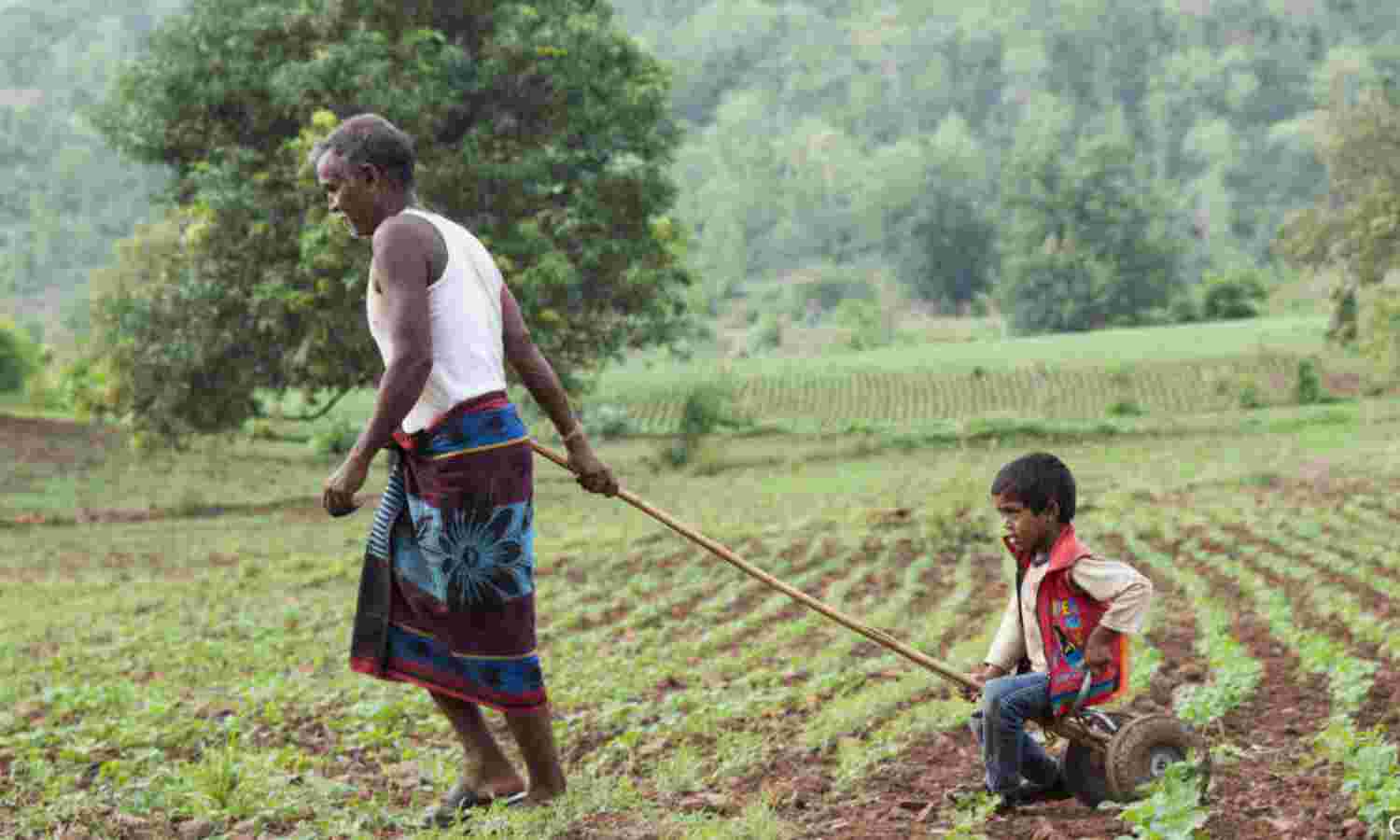As Real Incomes Improved, Farmers’ Children Became Less Likely To Take Up Farming
Bengaluru: Although income mobility improved country-wide in the seven years to 2012, the progress was unequal between states, while the likelihood of children pursuing the same occupation as their fathers declined for those employed in the low productivity agricultural sector, noted a January 2019 study on economic mobility.
Farmers’ children were 21.1 percentage points less likely to take up farming in 2012 than in 2005, their likelihood down to 32.4%, while the children of agricultural and other labourers were 4.1 percentage points less likely to pursue the same occupation as their fathers, the likelihood, 58.6%, the study noted.
For the first time since Independence, India saw a shift of surplus labour from agriculture to the non-agricultural sectors, as employment in agriculture fell in absolute numbers, Divya Prakash, co-author of the study and a research associate at JustJobs Network told IndiaSpend. (Read more about India’s unemployment crisis at https://www.indiaspend.com/category/indias-job-crisis/.)
Reduced employment in agriculture can largely be explained by the fact that more young people are acquiring an education, and with it comes the expectation of a better job, Sabina Dewan, co-author of the study, and president and executive director of JustJobs Network, told IndiaSpend, “The quality of jobs is as important as the quantity of jobs."
The study examined the evolution of the international discourse on job quality and economic mobility, the “missing ingredient” in the discourse on job quality.
It used the Indian Human Development Survey (IHDS-I), a nationally representative survey of 41,554 households conducted in 2004-2005, and IHDS-II (2011-12), which re-interviewed 83% of the same households.
“This dataset provides a unique opportunity to study whether economic mobility improved over 2005-2012,” the study noted.
Fewer farmers’ children taking to farming
The intergenerational mobility index,which measures the likelihood of children pursuing the same occupation as their fathers, showed that the likelihood declined for agricultural and other labourers from 62.7% to 58.6%, and from 53.5% to 32.4% for farmers.
“During [2005-2012], for the first time in a post-Independence era, India saw a Lewisian structural change--shift of surplus labour from agricultural to non-agricultural sector--as employment in the agricultural sector fell in absolute numbers,” said Prakash. “There was a decline in the share of children following in their fathers’ footsteps; many left agriculture or other rural labour and farming-related occupations moving into the non-agricultural sector.”
This means that children moved out of agriculture to non-agricultural sectors, especially construction, for higher wages. A;though there was intergenerational income mobility, there was no evidence for upward intergenerational occupational mobility for children-fathers of both occupational groups, he added.
Seventy-six percent of farmers would prefer to do some work other than farming and 61% would prefer to be employed in cities because of better education, health and employment avenues, Down To Earth reported on March 12, 2018, based on a survey report by the Centre for Study of Developing Societies.
India’s fast-expanding gig economy, involving app-based cab hailing and food delivery services, employs many workers who hail from rural or semi-urban homes, many of them either farmers or children of farmers, IndiaSpend reported on June 4, 2019.
According to the National Sample Survey, between 2004-05 and 2011-12, the number of farmers in rural areas fell by 19 million to 141 million and the number of landless labourers declined 19% to 69 million, Prakash added.
Yet, the number of people working as professionals (scientists, economists, teachers, jurists, etc.) whose parents were low-skilled workers (launderers, carpenters, miners, painters, etc.) declined by 8%, while their share in low-skilled occupations increased by the same amount.
This implies that opportunities for “upward mobility are few and [those] for backward mobility are very high,” said Prakash. Persons from upper castes and urban regions have a higher probability of moving up in terms of occupation and vice-versa.
Meanwhile, the number of people who followed their fathers into professions and lower-skilled occupations increased 3.1 percentage points and 8.1 percentage points, respectively.
Improvement in real income between 2005 and 2012
The non-directional income mobility index, which measures the magnitude of income change, is 1.165 for India as a whole, while the directional mobility index is 0.949--both over the period 2004-05 to 2011-12. The positive index value for directional mobility implies that real income has increased, indicating improved economic well-being.
Every state in India has witnessed positive income mobility, although the change has been “unequal”, the study noted. Tamil Nadu and Meghalaya have witnessed the highest income mobility, in that order.
Income mobility was positive for the three north-eastern states (Mizoram, Sikkim, Tripura) but low in magnitude. The proportion of households here that saw their overall household income decline was higher than the proportion of households that experienced an increase, Prakash said, adding that this is why overall income mobility was unequal. The overall household income of these three states was marginally higher in 2012 compared to 2005, said Prakash.
The difference between the indexes (0.216) shows that there are a number of households that have seen their real income--income after considering the effects of inflation--decrease.
Among social groups, upward movement in income is the highest among Other Backward Class (OBC) households, followed by forward castes, Brahmins, Scheduled Castes (SC) and Scheduled Tribes (ST).
Marginalised caste groups such as the SC, ST and OBC earn much less than the national household income, IndiaSpend reported on January 14, 2019.
Yet, in real terms, these social groups saw an improvement in their income levels in the seven years to 2012, showing that although disparity is wide, the gap is closing, Dewan said.
(Paliath is an analyst with IndiaSpend.)
We welcome feedback. Please write to respond@indiaspend.org. We reserve the right to edit responses for language and grammar.




